 Memorial fund created for families Memorial fund created for families
 Services tomorrow for George Perry Services tomorrow for George Perry
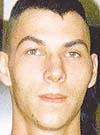 |
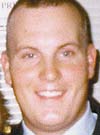 |
Sgt. Thomas E. Barber
|
Spc. Bob D. MacDonald
|
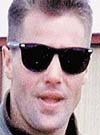 |
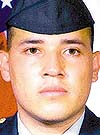 |
Chief Warrant Officer Gregory I. Montgomery
|
Spc. Rafael "Ralph" Olvera-Rodriguez
|
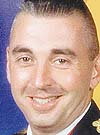 |
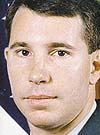 |
| Maj. Robert L. Olson |
Chief Warrant Officer George P. Perry |
By Walter Wright
Advertiser Staff Writer
The Army will remember six of its own in solemn services this morning at Schofield Barracks, even as investigators continue to pinpoint the cause of the Monday night helicopter crash in which they died.
Soldiers who were with them in the field where they fell, as well as family and friends from the base and across the country, will gather in the Main Chapel of the historic post for memorials.
The first, at 9 a.m., is sponsored by the Aviation Brigade, and the second, at 11:30 a.m., by the Division Artillery Brigade.
Jolted by the worst training accident in the history of Schofield’s 25th Infantry Division (Light), the Army is pressing forward to find out why two Black Hawk helicopters crashed in rain and darkness at the Kahuku Military Training Area, and what can be done to keep others in Black Hawks from harm.
When the people of the United States give the military its charge, "we have a contract to protect the sons and daughters of their nation," said Chief Warrant Officer 5 Dale Miller, a senior Black Hawk pilot.
"We will continue to train and to do it as safely as possible and protect the soldiers as best we can, always providing them with the best equipment available," said Miller, 48.
The six soldiers who died were all in a Black Hawk that landed on the side of a gulch. They were:
 Maj. Robert L. Olson, Headquarters and Headquarters Service Battery, 2nd Battalion, 11th Field Artillery Regiment, assigned as battalion operations office. Maj. Robert L. Olson, Headquarters and Headquarters Service Battery, 2nd Battalion, 11th Field Artillery Regiment, assigned as battalion operations office.
 Chief Warrant Officer 4 George P. Perry, A Company, 2nd Battalion, 25th Aviation Regiment, pilot. Chief Warrant Officer 4 George P. Perry, A Company, 2nd Battalion, 25th Aviation Regiment, pilot.
 Chief Warrant Officer 2 Gregory I. Montgomery, also A Company, 2nd Battalion, 25th Aviation Regiment, pilot. Chief Warrant Officer 2 Gregory I. Montgomery, also A Company, 2nd Battalion, 25th Aviation Regiment, pilot.
 Sgt. Thomas E. Barber, UH-60 crew member, assigned to C Company, 2nd Battalion, 25th Aviation Regiment. Sgt. Thomas E. Barber, UH-60 crew member, assigned to C Company, 2nd Battalion, 25th Aviation Regiment.
 Spc. Bob D. MacDonald, B Company, 2nd Battalion, 25th Aviation Regiment, UH-60 crew member. Spc. Bob D. MacDonald, B Company, 2nd Battalion, 25th Aviation Regiment, UH-60 crew member.
 Spc. Rafael Olvera-Rodriquez, Headquarters and Headquarters Service Battery, 2nd Battalion, 11th Field Artillery Regiment, field artillery crewman. Spc. Rafael Olvera-Rodriquez, Headquarters and Headquarters Service Battery, 2nd Battalion, 11th Field Artillery Regiment, field artillery crewman.
All of the 11 survivors were in a Black Hawk that landed hard but upright on a dirt access road. The helicopter that carried the six soldiers who died was carrying a Humvee underneath.
Rear Adm. Craig R. Quigley, a Pentagon spokesman, said in a briefing in Washington yesterday that the Black Hawk with the Humvee was "flying then veered over to the side and tumbled down a gulch that was to the side of ... the other helicopter, which had done the hard landing."
Quigley said it was unclear why the Black Hawk carrying survivors had made a hard landing.
Night-vision goggles were being used by crew members of both helicopters. The Army has said it can not confirm whether a midair collision took place, but that some part of the two helicopters came in contact.
Five officials from the U.S. Army Safety Center at Fort Rucker, Ala., are leading the investigation into the cause of the accident.
"We want to know what happened, and we want to ensure that it doesn’t happen again," Army spokeswoman Maj. Cynthia Teramae said.
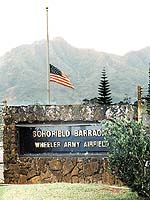 |
| The flag near Wheeler Army Airfield’s main gate reflects the mood at that military post and at Schofield Barracks as services approach for six soldiers who died Monday night.
Bruce Asato • The Honolulu Advertiser |
Miller, who is the point of contact between the brigade and the team from Fort Rucker, said investigators will have to look at human factors, the environment (such as weather conditions), and mechanical issues.
He said the Black Hawk, given the number of missions it flies, has been extremely reliable over the years. "I would say over all, considering the number of hours the Black Hawk flies, it is as safe if not safer than any other airframe," Miller said.
"And survivability — if you hit on the wheels with any kind of (lifting) power, it is very survivable. I have seen men walk out of crash scenes where you could not imagine anyone would survive."
A veteran of combat who flew helicopters in Desert Shield and Desert Storm, Miller, 48, said he would not consider the night-vision goggles and their strengths and limitations the first point of inquiry or the most likely suspect in any collision.
"My personal feelings are I wouldn’t fly at night without them," Miller said.
Approximately 75 percent of the Black Hawks’ air time is at night, when night-vision goggles are required for low-altitude flight. "If I have to fly at night, low to the ground as the Army does routinely, I would be afraid not to use them," Miller said.
"When you are in a tactical environment and trying to mask your aircraft and stay out of harm’s way from line-of-sight and any other weapons, when you are keeping the high ground between you and the bad guy, the only way to do that at night is with some kind of (night vision) device," Miller said.
The goggles do limit side vision to about 40 to 60 degrees, but crews cope by assigning individuals different sectors to watch and by constantly scanning the area, he said.
"It’s like driving a car — you don’t keep your focus on one point on the road all the time," he said. Every crew member moves his head to scan a larger area, and are able to peek under the goggles to check instruments or charts, sometimes using a "lip light" activated by a movement of the mouth to direct a blue-green beam that does not disrupt the goggle vision.
Depth perception is degraded somewhat by the fact that all images are seen in varying shades of green through the goggles, he said. It is not 20/20, but closer to 20/40 eyesight, he said. And visibility varies depending on the amount of ambient light from stars, the moon or other sources, Miller said. But crews are trained to compensate.
"We’re like one big eyeball, and there is never a quiet moment: we are always taking to each other: ‘Do you have that traffic at 12 o’clock?’ ‘Do you see that tree over there?’"
Even without any ambient light "you can still see everything around, although its not as crisp and clear."
Flying over featureless desert or ocean can make it difficult to fix the horizon in view, "but over land with any kind of vertical development, rocks, buildings, trees, you have good definition," he said.
A failure of peripheral vision is not a failure of the goggles, he said, but "just someone’s fault: how did we not see that?"
Miller’s routine is to move his head up and down and left and right, and glance under the goggles to see his instruments, even though the instruments are primarily the responsibility of another crew member.
"It is a tremendous amount to do, but it’s something we have to do, and we train every day to do it," he said.
The division was conducting an infantry brigade combat team field exercise involving more than 3,500 soldiers.
[back to top] |







